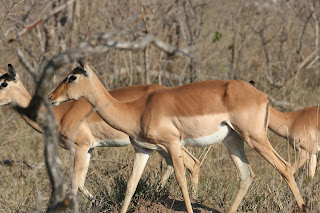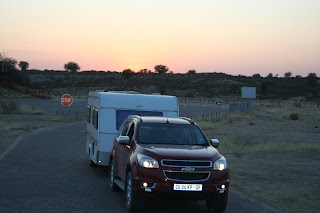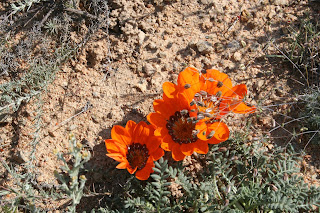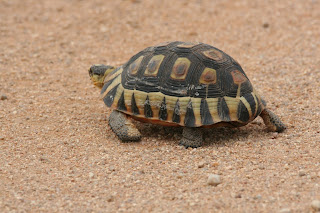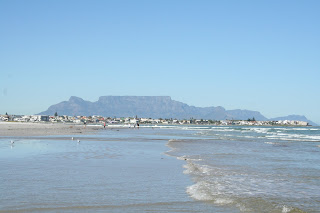Dullstroom, Hazyview, Kruger Park - October 2016
So, we had decided to take a few days out and visit the Hazyview area in Mpumalanga.
It was just to be a long week-end and I took off Friday and Monday.
We decided to leave early on the Friday, so as to arrive in Dullstroom in time for breakfast.
Just prior to entering Dullstroom you pass through a village of Belfast. We noticed that some of the homes had no roofs. Then just outside of town, all the trees were snapped in half and the trunks had no branches or leaves.
It was an hairy sight. Turns out they had had a tornado the day before. It was the second one, they had one in Feb 2016 as well.
I found some stuff on You Tube, but it does not show the trees snapped in half, which was an amazing sight.
Dullstroom is a small dorp/town.
http://dullstroom.co.za/
Their website advises :
Culture is abundant here with true culinary experiences. Numerous excellent restaurants, coffee shops, craft-beer brewery and a world-renowned whisky bar and eclectic pubs all form part of this relaxed village. Dullstroom supports a significant arts community – and is an escape for artists, writers and musicians. Come out and play in this unique African jewel.
We stopped off at a charming little restaurant called Charlie C's and had a superb breakfast.
After breakfast we took a pleasurably walk around a few shops. Found a outrageously expensive chocolate shop (so did not purchase anything there) and made our way over to the clock shop.
This is really an interesting shop with over 5000 clocks on display.
I was looking for the works for a small clock that I have (but where the mechanism has broken).
The lady assistant went out of her way to assist me with what I required and eventually found the correct mechanism somewhere in their factory.
From Dullstroom we made our way along the R540 to Lydenburg. This road was ok, but from Lydenburg to Pilgrim's Rest the R36 was not in a good condition at all.
It was sad to see how dry the entire area was and how the drought had impacted the trees and especially the bush.
Pilgrim's Rest
http://www.pilgrims-rest.co.za/
We made it to Pilgrim's rest and there we found The Stables Deli and Cafe. It gets its name because it used to be the sables for the Royal Hotel and this is the place where the guests would stable their horses when they stayed overnight.
Had a very cold beer, as it was extremely hot in the valley.
We did not hang around too long and after a few beers made our way over to Hazyview and Waterberry Hill, where we had a reservation.
Hazyview
http://www.hazyviewinfo.co.za/
Hazyview has really grown in the last few years and there are now a few shopping centers/malls in town. So, you are able to get everything that you need at these malls.
Waterberry Hill
http://www.waterberryhill.co.za
Waterberry hill is set on top of a hill and the name waterberry comes from indigenous trees of the same name.
This is a very nice resort and the chalet that we had had everything that we needed (EXCEPT for an air conditioner). It was really extremely hot the weekend that we were there. The chalet did, however, have a ceiling fan in each bedroom, the kitchen and the lounge. I had also taken along 2 fans as well.
There was a nice braai, which we used on two evenings.
The pool was good.
We had decided to do two things whilst in the area. one, drive around and visit some of the attractions and two, visit the Kruger park.
Barberton
http://barberton.co.za/
Our first day, Saturday, we decided to take a leisurely drive across to Barbeton. This is a 143km drive from the resort. I had had a look at the Barberton website and it sounded interesting. Well, what a let down, really.
The town was not looking good, the only tea room was out in the open and called the Victorian Tea Garden and Restaurant. I don't think that the tea room had had a coat of paint since Victorian times. But, the cool-drink was good.
They do have a very comprehensive information center and I was able to obtain a few maps etc. The lady operating the Information center was extremely helpful and knowledgeable.
From Barbeton we made our way back to Mbombelo and then back to the resort.
On the Sunday we decided to visit the Kruger Park, entering through the Phabeni gate and exiting through the Numbi gate.
Kruger National Park
https://www.sanparks.org/parks/kruger/
The entry was painless and ZAR 210.00 for 3 adults for the day was a great price, I thought.
The park is really looking dreadful. The drought has had a devastating impact on the vegetation and there is almost no grass left for grazing. Its amazing that the antelope all look so healthy. One disturbing sighting was two hippo lying in a very small pool of mud. It was mud, because the water in the dam had dried up.
We had a very good day, sighting wise and did see 4 of the big five as well as many antelope, zebra and giraffe.
However, as far as zebra and wildebeest go, we were only able to see 2 wildebeest and about 4 zebra. A few buffalo were also sighted an 2 occasions.
We were lucky enough to see Hyena as well.
Elephant were only seen on their own (one at a time, no heard's).
Its extremely dry !!
But, as I said, we were lucky with the animal sightings :
Zebra :
https://en.wikipedia.org/wiki/Zebra
Zebras (/ˈzɛbrə/ zeb-rə or /ˈziːbrə/ zee-brə)[1] are several species of African equids(horse family) united by their distinctive black and white striped coats. Their stripes come in different patterns, unique to each individual. They are generally social animals that live in small harems to large herds.
Hyena:
https://en.wikipedia.org/wiki/Hyena
Hyenas or hyaenas (from Greek ὕαινα hýaina[1]) are any feliform carnivoranmammals of the family Hyaenidae /haɪˈɛnᵻdiː/. With only four extant species, it is the fifth-smallest biological family in the Carnivora, and one of the smallest in the class Mammalia.[2] Despite their low diversity, hyenas are unique and vital components of most African ecosystems.[3]
Leopard:
https://en.wikipedia.org/wiki/Leopard
The leopard is distinguished by its well-camouflaged fur, opportunistic hunting behaviour, broad diet, and strength (which it uses to move heavy carcasses into trees), as well as its ability to adapt to various habitats ranging from rainforest to steppe, including arid and montane areas, and its ability to run at speeds of up to 58 kilometres per hour (36 mph).[5]
Giraffe:
https://en.wikipedia.org/wiki/Giraffe
The giraffe's chief distinguishing characteristics are its extremely long neck and legs, its horn-like ossicones, and its distinctive coat patterns. It is classified under the family Giraffidae, along with its closest extant relative, the okapi. Each of the four species is distinguished by its coat patterns and genetics. Its scattered range extends from Chad in the north to South Africa in the south, and from Niger in the west to Somalia in the east.
Kudu :
https://en.wikipedia.org/wiki/Kudu
Elephant :
https://en.wikipedia.org/wiki/Elephant
Elephants are large mammals of the family Elephantidae and the order Proboscidea. Two species are traditionally recognised, the African elephant(Loxodonta africana) and the Asian elephant (Elephas maximus), although some evidence suggests that African bush elephants and African forest elephants are separate species (L. africana and L. cyclotis respectively). Elephants are scattered throughout sub-Saharan Africa, South Asia, and Southeast Asia.
Impala :
https://en.wikipedia.org/wiki/Impala
The impala (pronounced /ɪmˈpɑːlə,-ˈpalə/) (Aepyceros melampus) is a medium-sized antelope in eastern and southern Africa. The sole member of the genus Aepyceros, it was first described by German zoologist Martin Hinrich Carl Lichtenstein in 1812. Two subspecies are recognised – the common impala, and the larger and darker black-faced impala. The impala reaches 70–92 centimetres (28–36 inches) at the shoulder and weighs 40–76 kilograms (88–168 pounds). It features a glossy, reddish brown coat. The male's slender, lyre-shaped horns are 45–92 centimetres (18–36 in) long.
Cheetah :
https://en.wikipedia.org/wiki/Cheetah
The cheetah (pronounced /ˈtʃiːtə/) (Acinonyx jubatus), also known as the hunting leopard[citation needed], is a big cat that occurs mainly in eastern and southern Africa and a few parts of Iran. The only extant member of the genus Acinonyx, the cheetah was first described by Johann Christian Daniel von Schreber in 1775. The cheetah is characterised by a slender body, deep chest, spotted coat, a small rounded head, black tear-like streaks on the face, long thin legs and a long spotted tail. Its lightly built, slender form is in sharp contrast with the robust build of the other big cats. The cheetah reaches nearly 70 to 90 cm (28 to 35 in) at the shoulder, and weighs 21–72 kg (46–159 lb). Though taller than the leopard, it is notably smaller than the lion. Basically yellowish tan or rufous to greyish white, the coat is uniformly covered with nearly 2,000 solid black spots.
Southern Ground Hornbill :
https://en.wikipedia.org/wiki/Southern_ground_hornbill
The southern ground hornbill (Bucorvus leadbeateri; formerly known as Bucorvus cafer), is one of two species of ground hornbill and is the largest species of hornbill.
This is a large bird, at 90 to 129 centimetres (35.4 to 50.8 in) long. Females weigh 2.2 to 4.6 kilograms (4.9 to 10.1 lb), while the larger males weigh 3.5 to 6.2 kilograms (7.7 to 13.7 lb).
The southern ground hornbill is characterized by black coloration and vivid red patches of bare skin on the face and throat (yellow in juvenile birds), which are generally believed to keep dust out of the birds eyes while they forage during the dry season. The white tips of the wings (primary feathers) seen in flight are another diagnostic characteristic. The beak is black and straight and presents a casque, more developed in males. Female southern ground hornbills are smaller and have violet-blue skin on their throats. Juveniles to six years old lack the prominent red pouch, but have a duller patch of grey in its place.
Some birds seen in the park :
We exited the park at Numbi gate and the litter was disgusting. Mounds lying next to the road and it appears nothing being done about it.
On the Monday it was time to leave Waterberry Hill.
We were in no rush and were taking the "normal" route home. Thats via White River, Mombelo and along the N4 and N12 back to Johannesburg.
Millys
http://millys.co.za/
We stopped off at Millys for some lunch. It was quiet windy, and the small lake looked very choppy. Anyway, the lunch was good.
We arrived back home at about 3pm.
A good trip !
Trip Details :
Total Km's : 1,380 Km
Fuel Cost : ZAR 1,732,59
Total Fuel : 138,80 L
L 100 Km's : 10,06
Cost per Km : ZAR 1,26
So, we had decided to take a few days out and visit the Hazyview area in Mpumalanga.
It was just to be a long week-end and I took off Friday and Monday.
We decided to leave early on the Friday, so as to arrive in Dullstroom in time for breakfast.
Just prior to entering Dullstroom you pass through a village of Belfast. We noticed that some of the homes had no roofs. Then just outside of town, all the trees were snapped in half and the trunks had no branches or leaves.
It was an hairy sight. Turns out they had had a tornado the day before. It was the second one, they had one in Feb 2016 as well.
I found some stuff on You Tube, but it does not show the trees snapped in half, which was an amazing sight.
Tornado Belfast 26/10/2016 - YouTube
Dullstroom is a small dorp/town.
http://dullstroom.co.za/
Their website advises :
Culture is abundant here with true culinary experiences. Numerous excellent restaurants, coffee shops, craft-beer brewery and a world-renowned whisky bar and eclectic pubs all form part of this relaxed village. Dullstroom supports a significant arts community – and is an escape for artists, writers and musicians. Come out and play in this unique African jewel.
We stopped off at a charming little restaurant called Charlie C's and had a superb breakfast.
After breakfast we took a pleasurably walk around a few shops. Found a outrageously expensive chocolate shop (so did not purchase anything there) and made our way over to the clock shop.
This is really an interesting shop with over 5000 clocks on display.
I was looking for the works for a small clock that I have (but where the mechanism has broken).
The lady assistant went out of her way to assist me with what I required and eventually found the correct mechanism somewhere in their factory.
From Dullstroom we made our way along the R540 to Lydenburg. This road was ok, but from Lydenburg to Pilgrim's Rest the R36 was not in a good condition at all.
It was sad to see how dry the entire area was and how the drought had impacted the trees and especially the bush.
Pilgrim's Rest
http://www.pilgrims-rest.co.za/
We made it to Pilgrim's rest and there we found The Stables Deli and Cafe. It gets its name because it used to be the sables for the Royal Hotel and this is the place where the guests would stable their horses when they stayed overnight.
Had a very cold beer, as it was extremely hot in the valley.
We did not hang around too long and after a few beers made our way over to Hazyview and Waterberry Hill, where we had a reservation.
Hazyview
http://www.hazyviewinfo.co.za/
Hazyview has really grown in the last few years and there are now a few shopping centers/malls in town. So, you are able to get everything that you need at these malls.
Waterberry Hill
http://www.waterberryhill.co.za
Waterberry hill is set on top of a hill and the name waterberry comes from indigenous trees of the same name.
This is a very nice resort and the chalet that we had had everything that we needed (EXCEPT for an air conditioner). It was really extremely hot the weekend that we were there. The chalet did, however, have a ceiling fan in each bedroom, the kitchen and the lounge. I had also taken along 2 fans as well.
There was a nice braai, which we used on two evenings.
The pool was good.
We had decided to do two things whilst in the area. one, drive around and visit some of the attractions and two, visit the Kruger park.
Barberton
http://barberton.co.za/
Our first day, Saturday, we decided to take a leisurely drive across to Barbeton. This is a 143km drive from the resort. I had had a look at the Barberton website and it sounded interesting. Well, what a let down, really.
The town was not looking good, the only tea room was out in the open and called the Victorian Tea Garden and Restaurant. I don't think that the tea room had had a coat of paint since Victorian times. But, the cool-drink was good.
They do have a very comprehensive information center and I was able to obtain a few maps etc. The lady operating the Information center was extremely helpful and knowledgeable.
From Barbeton we made our way back to Mbombelo and then back to the resort.
On the Sunday we decided to visit the Kruger Park, entering through the Phabeni gate and exiting through the Numbi gate.
Kruger National Park
https://www.sanparks.org/parks/kruger/
The entry was painless and ZAR 210.00 for 3 adults for the day was a great price, I thought.
The park is really looking dreadful. The drought has had a devastating impact on the vegetation and there is almost no grass left for grazing. Its amazing that the antelope all look so healthy. One disturbing sighting was two hippo lying in a very small pool of mud. It was mud, because the water in the dam had dried up.
We had a very good day, sighting wise and did see 4 of the big five as well as many antelope, zebra and giraffe.
However, as far as zebra and wildebeest go, we were only able to see 2 wildebeest and about 4 zebra. A few buffalo were also sighted an 2 occasions.
We were lucky enough to see Hyena as well.
Elephant were only seen on their own (one at a time, no heard's).
Its extremely dry !!
But, as I said, we were lucky with the animal sightings :
Zebra :
https://en.wikipedia.org/wiki/Zebra
Zebras (/ˈzɛbrə/ zeb-rə or /ˈziːbrə/ zee-brə)[1] are several species of African equids(horse family) united by their distinctive black and white striped coats. Their stripes come in different patterns, unique to each individual. They are generally social animals that live in small harems to large herds.
Hyena:
https://en.wikipedia.org/wiki/Hyena
Hyenas or hyaenas (from Greek ὕαινα hýaina[1]) are any feliform carnivoranmammals of the family Hyaenidae /haɪˈɛnᵻdiː/. With only four extant species, it is the fifth-smallest biological family in the Carnivora, and one of the smallest in the class Mammalia.[2] Despite their low diversity, hyenas are unique and vital components of most African ecosystems.[3]
Leopard:
https://en.wikipedia.org/wiki/Leopard
The leopard is distinguished by its well-camouflaged fur, opportunistic hunting behaviour, broad diet, and strength (which it uses to move heavy carcasses into trees), as well as its ability to adapt to various habitats ranging from rainforest to steppe, including arid and montane areas, and its ability to run at speeds of up to 58 kilometres per hour (36 mph).[5]
Giraffe:
https://en.wikipedia.org/wiki/Giraffe
The giraffe's chief distinguishing characteristics are its extremely long neck and legs, its horn-like ossicones, and its distinctive coat patterns. It is classified under the family Giraffidae, along with its closest extant relative, the okapi. Each of the four species is distinguished by its coat patterns and genetics. Its scattered range extends from Chad in the north to South Africa in the south, and from Niger in the west to Somalia in the east.
Kudu :
https://en.wikipedia.org/wiki/Kudu
The kudu are two species of antelope of the genus Tragelaphus:
- Lesser kudu, Tragelaphus imberbis, of eastern Africa
- Greater kudu, Tragelaphus strepsiceros, of eastern and southern Africa
Elephant :
https://en.wikipedia.org/wiki/Elephant
Elephants are large mammals of the family Elephantidae and the order Proboscidea. Two species are traditionally recognised, the African elephant(Loxodonta africana) and the Asian elephant (Elephas maximus), although some evidence suggests that African bush elephants and African forest elephants are separate species (L. africana and L. cyclotis respectively). Elephants are scattered throughout sub-Saharan Africa, South Asia, and Southeast Asia.
Impala :
https://en.wikipedia.org/wiki/Impala
The impala (pronounced /ɪmˈpɑːlə,-ˈpalə/) (Aepyceros melampus) is a medium-sized antelope in eastern and southern Africa. The sole member of the genus Aepyceros, it was first described by German zoologist Martin Hinrich Carl Lichtenstein in 1812. Two subspecies are recognised – the common impala, and the larger and darker black-faced impala. The impala reaches 70–92 centimetres (28–36 inches) at the shoulder and weighs 40–76 kilograms (88–168 pounds). It features a glossy, reddish brown coat. The male's slender, lyre-shaped horns are 45–92 centimetres (18–36 in) long.
Cheetah :
https://en.wikipedia.org/wiki/Cheetah
The cheetah (pronounced /ˈtʃiːtə/) (Acinonyx jubatus), also known as the hunting leopard[citation needed], is a big cat that occurs mainly in eastern and southern Africa and a few parts of Iran. The only extant member of the genus Acinonyx, the cheetah was first described by Johann Christian Daniel von Schreber in 1775. The cheetah is characterised by a slender body, deep chest, spotted coat, a small rounded head, black tear-like streaks on the face, long thin legs and a long spotted tail. Its lightly built, slender form is in sharp contrast with the robust build of the other big cats. The cheetah reaches nearly 70 to 90 cm (28 to 35 in) at the shoulder, and weighs 21–72 kg (46–159 lb). Though taller than the leopard, it is notably smaller than the lion. Basically yellowish tan or rufous to greyish white, the coat is uniformly covered with nearly 2,000 solid black spots.
Southern Ground Hornbill :
https://en.wikipedia.org/wiki/Southern_ground_hornbill
The southern ground hornbill (Bucorvus leadbeateri; formerly known as Bucorvus cafer), is one of two species of ground hornbill and is the largest species of hornbill.
This is a large bird, at 90 to 129 centimetres (35.4 to 50.8 in) long. Females weigh 2.2 to 4.6 kilograms (4.9 to 10.1 lb), while the larger males weigh 3.5 to 6.2 kilograms (7.7 to 13.7 lb).
The southern ground hornbill is characterized by black coloration and vivid red patches of bare skin on the face and throat (yellow in juvenile birds), which are generally believed to keep dust out of the birds eyes while they forage during the dry season. The white tips of the wings (primary feathers) seen in flight are another diagnostic characteristic. The beak is black and straight and presents a casque, more developed in males. Female southern ground hornbills are smaller and have violet-blue skin on their throats. Juveniles to six years old lack the prominent red pouch, but have a duller patch of grey in its place.
Some birds seen in the park :
We exited the park at Numbi gate and the litter was disgusting. Mounds lying next to the road and it appears nothing being done about it.
On the Monday it was time to leave Waterberry Hill.
We were in no rush and were taking the "normal" route home. Thats via White River, Mombelo and along the N4 and N12 back to Johannesburg.
Millys
http://millys.co.za/
We stopped off at Millys for some lunch. It was quiet windy, and the small lake looked very choppy. Anyway, the lunch was good.
We arrived back home at about 3pm.
A good trip !
Trip Details :
Total Km's : 1,380 Km
Fuel Cost : ZAR 1,732,59
Total Fuel : 138,80 L
L 100 Km's : 10,06
Cost per Km : ZAR 1,26





























